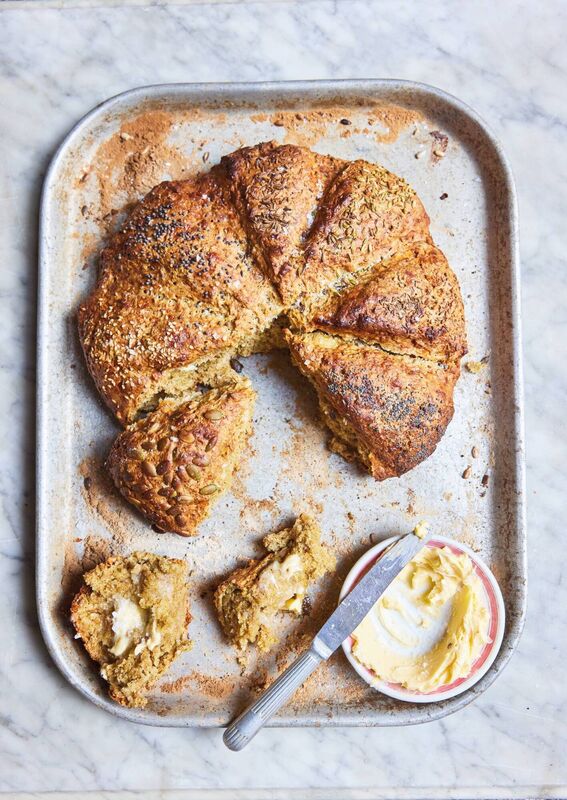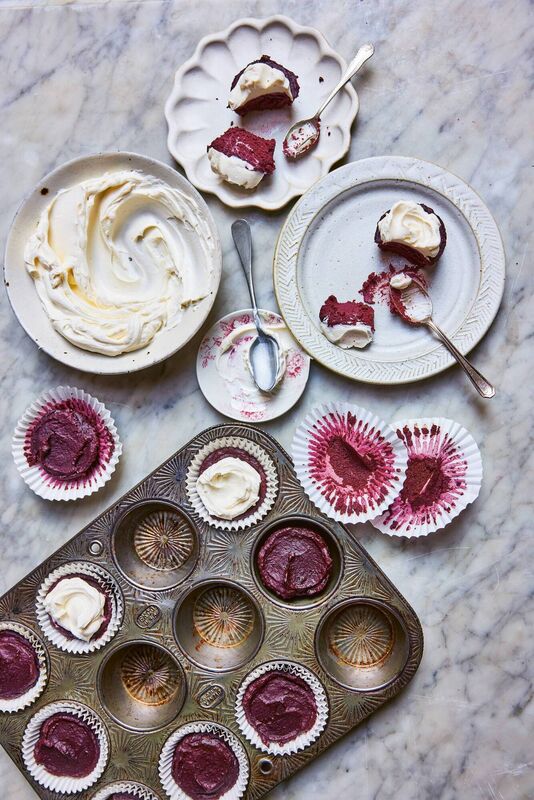Winter warmers: 3 recipes from Clodagh McKenna's new book

McKenna says not to try and overhaul your diet at once and instead to make small changes so they stick. Picture: David Loftus/PA
When you watch Clodagh McKenna on ITV’s , she’s fresh off doing a meditation behind the scenes - and probably a dance too.
, by Clodagh McKenna, is published in hardback by Kyle Books. Photography by David Loftus.
Warm up this winter with something nourishing. “I love all kinds of beans and try to eat them at least twice a week. They are full of protein and I find I sleep really well after eating this,” says Clodagh McKenna.
“If you have pecorino cheese, which is more pungent in flavour, it really is fabulous grated over this dish, but Parmesan - which you may already have in - works well too. Serve in warmed bowls, with lightly toasted sourdough to mop up the garlicky broth.”
1tbsp olive oil, plus more to serve
1 small fennel bulb, finely chopped
1 onion, finely chopped
2tsp finely chopped rosemary leaves
5 garlic cloves, crushed
1/4tsp chilli flakes
200-250g kale, cavolo nero or chard, coarse stems of kale or cavolo nero removed, chard stems and all leaves chopped
2 x 400g cans of cannellini beans, drained and rinsed
500ml vegetable or chicken stock
Juice of 1 lemon
3tbsp finely grated Parmesan cheese, plus more to serve
Sea salt flakes and freshly ground black pepper
Toasted sourdough bread, to serve

Method
1. Place a flameproof casserole over a medium heat with the olive oil. Add the fennel, onion and rosemary and cook for 4-6 minutes, stirring occasionally, until tender. Next stir in garlic and chilli flakes and cook until fragrant, about 1 minute.
2. Begin adding handfuls of the greens, cooking and stirring until the leaves wilt.
3. Add beans and stock, season with salt and pepper and stir to combine. Bring to boil, then reduce heat to low and simmer, mashing some of the beans with a wooden spoon, until the liquid has reduced and thickened, 6-8 minutes.
4. Remove from the heat, stir in the lemon juice and the 3 tablespoons of Parmesan. Taste and season with salt and pepper if needed.
5. Divide between warmed shallow bowls and top with more Parmesan cheese and a drizzle of olive oil. Serve with toasted sourdough bread.
“Beautiful, isn’t it? This recipe is based on the wonderful traditional Irish soda bread that the whole world should know how to make,” says Clodagh McKenna.
“I’ve added cheddar for flavour, but leave that out for the classic recipe.
“This loaf is cut into wedges, so every person can tear off their own, and they make it look like a sunflower! You can use any seeds I suggest here, even just a single variety.This freezes well, too.”
200g plain flour, plus more to dust
1tsp bicarbonate of soda
1tsp fine sea salt
350g wholemeal flour
125g cheddar cheese, grated
350ml whole milk, plus more to glaze
250ml natural yogurt, plus more to glaze
For the topping, any of:
Pumpkin seeds, sesame seeds, poppy seeds, caraway seeds, sunflower seeds, cumin seeds, chia seeds or mustard seeds.

Method
1. Preheat oven to 200C fan (425F), Gas Mark 7.
2. Sift white flour, bicarb and salt into a mixing bowl. Stir in wholemeal flour and cheddar.
With clean hands, mix to combine, then make a well in the centre of the bowl.
3. In separate bowl, whisk together the milk and yogurt, then slowly pour this into the well of dry ingredients, using a fork to mix it into the flour. Make sure there are no dry patches and that the dough is completely wet.
4. Pat your hands with flour and shape dough into a round, then place on a floured baking tray.
Flour a large knife and cut a cross into the top, followed by a diagonal cross, cutting about two-thirds of way through. You should have 8 wedges, like cake slices.
5. Mix together a small amount more of milk and yogurt, in a rough 3:2 ratio, in the yogurt bowl. Brush the loaf with the milk and yogurt mixture, to give a lovely golden colour to the bread once baked, then sprinkle on the seeds. It should start to look like a flower.
6. Bake for 20 minutes, then reduce oven temperature to 150C fan (340F), Gas Mark 31/2 and bake for a further 15 minutes. To test if the loaf is cooked, tap the base with your knuckles: it should sound hollow. Leave to cool on a wire rack. It will last, wrapped in a damp tea towel, for 1 week.
Add some goodness into your bakes.
If you’ve never tried a beetroot-chocolate cake, then you are in for such a treat!” says Clodagh McKenna.
“The beetroot brings a delicious moist texture and the cakes are majestically rich and deep in flavour, while remaining very light in texture. Topped with the exotic coconut icing, these are complete heaven!”
300g cooked beetroot, peeled and cut into chunks (or cook your own)
230g pitted dates, chopped
115g unsalted butter, melted
1tbsp tamari
2tsp vanilla extract
85g cacao powder
4 eggs
For the icing:
165g full-fat cream cheese
50g coconut cream
2tbsp maple syrup

Method
1. Preheat oven to 170C fan (375F), Gas Mark 5.
2. Blend the beetroot in a food processor with the dates, melted butter, tamari and vanilla extract until smooth.
3. Add the cacao, then the eggs (adding them at the end helps stop the cacao travelling up the sides of the machine). Blend until smooth and creamy.
4. Line a 12-hole muffin tray with paper muffin cases and transfer mixture into the cupcake cases. These don’t rise and puff up, so fill them almost to the top.
5. Bake for 17-19 minutes. The cakes are ready when still slightly soft in the middle and will firm up as they cool. Cool on a wire rack, then transfer to the refrigerator.
6. To make the icing, whisk all the ingredients together and place in refrigerator for at least 30 minutes to thicken up.
7. Now spoon the icing on the cupcakes and eat. Pure bliss!







 App?
App?





